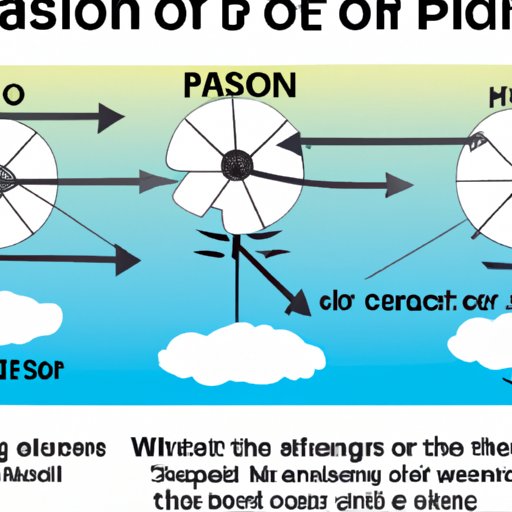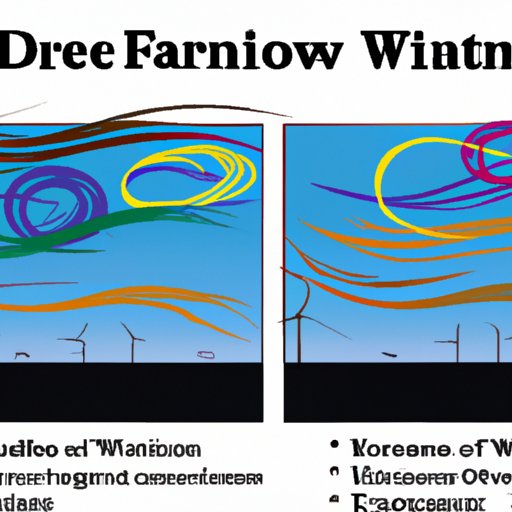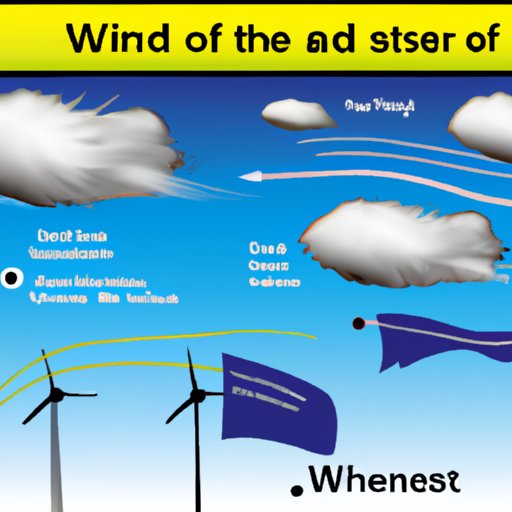Introduction
Wind is a natural phenomenon that has been around since the dawn of time, but few understand exactly how it works. Understanding wind is important not only for predicting weather patterns but also for harnessing its power as an energy source. In this article, we will explore the basics of wind formation, movement, and energy, from the forces that drive it to the effects it has on the atmosphere.
Explaining Wind: What is Wind and How Does it Work?
In simple terms, wind is the movement of air. It is made up of tiny particles of gas, such as nitrogen and oxygen, which are in constant motion. The forces that drive this motion come from two sources: the sun and the rotation of the Earth. The sun heats the atmosphere unevenly, creating areas of high and low pressure. These pressure differences create winds that move from areas of high pressure to areas of low pressure. The Earth’s rotation also plays a role, as it causes winds to curve in a certain direction, a phenomenon known as the Coriolis effect.
Wind is measured and classified according to several factors, including speed, direction, and duration. Wind speed is measured in miles per hour or kilometers per hour, while direction is measured in degrees, with 0° indicating north, 90° indicating east, 180° indicating south, and 270° indicating west. Duration is measured in hours, days, or even weeks.
A Layman’s Guide to Wind: Basics of Wind Formation and Movement
There are several factors that influence the formation and movement of wind. Temperature, humidity, and atmospheric pressure all play a role in shaping wind patterns. Temperature affects the amount of energy available for wind formation, while humidity affects the amount of moisture in the air. Atmospheric pressure, meanwhile, affects the direction and speed of winds.
Winds can be divided into two main types: local and global. Local winds are those that occur over a small area and are usually caused by differences in temperature. Examples include sea breezes, mountain breezes, and land breezes. Global winds, meanwhile, are winds that occur over larger areas and are usually caused by the rotation of the Earth. Examples include trade winds, westerlies, and polar easterlies.

From Air Pressure to Wind: Understanding the Process
Air pressure is an important factor in understanding how wind works. When air pressure is high, the air molecules become compressed, creating an area of high pressure. When air pressure is low, the air molecules spread out, creating an area of low pressure. The difference in air pressure between these two areas causes the air to move from the area of high pressure to the area of low pressure, creating wind.
The Coriolis effect is another important factor. It is caused by the Earth’s rotation and causes winds to curve in a certain direction. In the Northern Hemisphere, winds curve to the right, while in the Southern Hemisphere, they curve to the left. This effect helps explain why some winds, such as trade winds, blow in a consistent direction.
Wind Energy: Harnessing the Power of Wind
Wind energy is one of the most promising forms of renewable energy, and it can be harnessed in a variety of ways. The most common method is to use wind turbines, which convert wind energy into electricity. Wind turbines are usually grouped together in large wind farms, which can provide enough energy to power entire cities. Other methods of harnessing wind energy include using sails to propel boats and using windmills to pump water.

Wind Patterns: Exploring Global Wind Circulation
Global wind circulation is the movement of air around the world. It is driven by the unequal heating of the atmosphere and the Coriolis effect. This circulation creates distinct patterns of winds that circle the Earth. One of the most notable of these is the jet stream, a band of strong winds located in the upper atmosphere. The jet stream is responsible for influencing global weather patterns, as it carries warm and cold air masses around the world.

Wind in the Atmosphere: Examining the Effects of Wind on Weather
Wind can have a significant impact on the atmosphere and weather patterns. By moving air masses around the world, wind helps transport heat and moisture, which can affect temperature, precipitation, and other weather phenomena. Additionally, wind can cause turbulence in the atmosphere, which can lead to thunderstorms and other severe weather events.
Conclusion
In conclusion, wind is a powerful and complex force of nature that affects our lives in many ways. From providing us with energy to influencing weather patterns, understanding how wind works is essential for predicting and harnessing its power. We now have a better understanding of the forces that drive wind formation and movement, as well as the effects it has on the atmosphere.
(Note: Is this article not meeting your expectations? Do you have knowledge or insights to share? Unlock new opportunities and expand your reach by joining our authors team. Click Registration to join us and share your expertise with our readers.)
